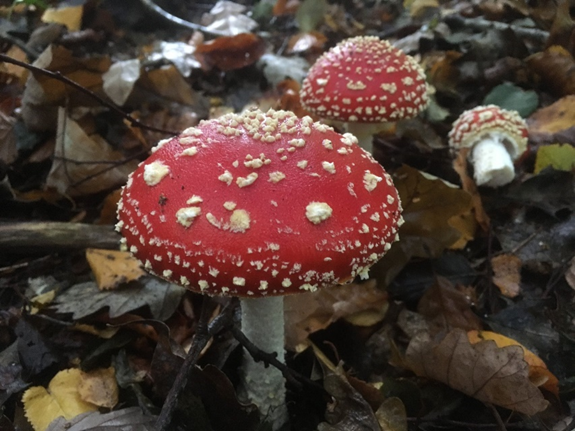Autumn Fungi
Autumn Fungi
If you have been walking in the countryside recently you will probably have noticed that many fungi are starting to appear now that we have entered autumn and the rain has started. Identification of fungi can be problematic as, there are perhaps 6 times as many fungal species as there are flowering plants and the mushroom or toadstool we see is just the fruiting body of the fungus and is usually only short lived which doesn’t help. However, some species are easily identified and a few of these are illustrated below, if you find any of these species or any others you can identify then please send the details to the Jersey Biodiversity Centre. Remember fungi are an essential part of the ecosystem, recycling nutrients and should be respected.
Amanita muscaria or Fly Agaric - This stunningly beautiful species cannot be mistaken for anything else and does seem to be fairly common. Its common name is derived from its use for killing flies.
Laccaria amethystina - This purple species can be found in leaf litter, the colour fades somewhat as it gets older but it should be easy to spot, it is often found near to the related, and very common, Laccaria laccata otherwise known as the Deceiver.
Inocybe geophylla (photo below) - The genus Inocybe is large and many species cannot be identified without microscopy, but this delicate fungus is readily identified, look out for the white cap with a distinctive point in the middle.
Clathrus ruber - This striking species produces a strong smell to attract insects which then disperse the fungal spores. Most related species are tropical, and Jersey is at the northern end of the range for Clathrus ruber. It is frequently found in garden soil.
Written by Nick Aubin November 2020

